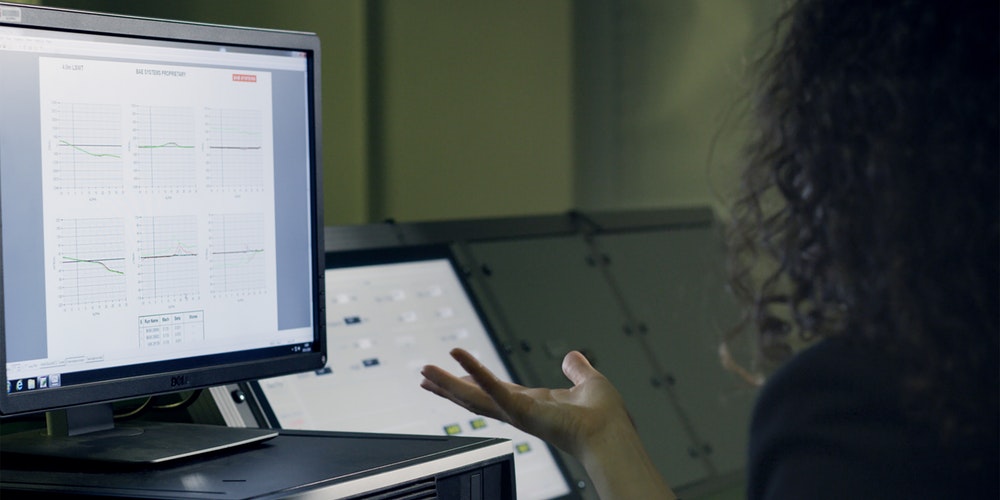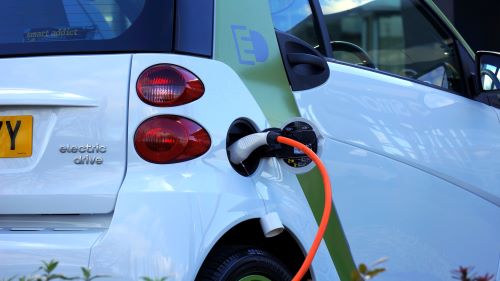An uninterruptable power supply (UPS) acts as a secondary power source for computers and other memory-based hardware.
Computers store many sensitive hardware components which can be vulnerable if sudden power loss causes damage. A high-quality UPS system is designed to protect these components in the event of a mains surge, or blackout.
UPS units are becoming more popular as part of home and working computing setups since these uninterruptible power supplies offer an extra layer of security and added peace of mind when it comes to both hardware and data.
In this guide, we’ll explore what a UPS does, how they protect expensive and fragile high-end computing components and what electrical surges, blackouts and other electrical anomalies can do to the equipment when left unprotected.
What is a UPS Battery?
UPS power supplies typically sit between the mains wall socket and the computer power cable. Depending on the specific environment in which it is being used, and the overall power facility, the average home or office setup may include a relatively compact battery, constructed around a high-drain rechargeable power cell.
Most commonly, this will be a (VRLA) lead-acid battery, but consistent developments in lithium-ion technologies have meant that Li-ion cells are becoming more common components within UPS systems.
- VRLA is a lead-acid battery which is typically easy to maintain and is generally considered as the basic, yet reliable form of UPS power.
- Li-ion UPS batteries, on the other hand, are far more compact and lightweight and can include integrated power management features, such as advanced charge and voltage balance.
- VLA is a far less available option, as they are generally only considered for use in highly specific environments. The chemical construction of the battery means it must be stored in separate battery storehouses due to their potentially hazardous nature.
As well as the battery and the casing, UPS power supplies include a selection of other useful features, which depend on the model and the cost of the unit. These could include:
- Performance monitoring software
- Management card slows
- Power surge, low voltage, deep discharge and temperature protection
- LCD display and readable panels
- Graphical calibration interfaces
- Various IP ratings
What is a UPS For & How Does it Work?
As we’ve already touched on, the core purpose of a UPS unit is a provide a source of uninterruptible power to continue to power a computer set up, in the event of a blackout or similar mains electric malfunction.
A UPS is not intended to offer long-term backup for connected devices. It is designed to provide a limited window in which the user can still input all the shutdown procedures of the device, without the risk of damage.
The simple explanation is that the UPS power supply collects and stores some of the power drawn from the wall socket into an onboard battery while sending the rest of the power to enable the device to function.
If for any reason, the electricity flow coming from the mains is halted, the UPS will automatically switch to the battery power to give the user the chance to perform the usual shutdown procedure.
Hardware Damage & Data Loss
The idea behind the UPS is that it shields susceptible and often costly hardware components from physical or even memory-based impairment if there’s a sudden forced disconnection from the mains power.
A UPS will also ensure that any vital data isn’t corrupted or lost in the middle of a task. When using a computer daily, the risk of severe damage and/or data loss in the event of something unexpected is actually quite high – that’s why there’s usually a correct way to disconnect a device during data transfer, think of a USB device for example.
The worst-case scenario when this happens is that is can lead to corrupted files that are unreadable by either the host, the connected device or both. Data that has been damaged in this way can, on some occasions, be retrieved. However, if you are unable to salvage it, then it’s effectively lost.
This is why keeping backups is a key recommendation, but that will only apply to your own data, which is designed to be moved across devices.
In terms of the hardware itself, there are critical transfers taking place at hardware and OS level all the time the computer is running – most of which are critical to the operating function of the machine.
In the case of unexpected power loss, it’s this interruption to the core processes that can cause irreversible damage; the UPS is designed to prevent this.
Types of UPS Power Supply
There are a few different kinds of UPS available. Whatever brand or model you select, you’ll find a wide array of specifications, features and configurations.
However, the most important thing when selecting a UPS unit is to choose the right core type, which comes down to a few variations.
Online UPS
An online UPS is generally at the higher end of the scale in terms of usage scenarios. While often quite costly; it offers the greatest protection for users.
Although the term ‘online’, might have you thinking it’s something to do with internet connectivity, it actually refers to the fact that is continually working and delivering electricity supply to your computer, even when conditions are optimal.
This basically means that this kind of UPS is always performing, rather than springing to action in an emergency. From the computer’s perspective, this means that even when the power supply is lost, there is still a constant flow of stable power.
Of course, this can be of high value for specific applications, where data or hardware loss can be crippling, but for most home applications, this shouldn’t be necessary.
Offline/Standby UPS
The offline or standby UPS does pretty much the exact opposite of the example we outlined above. Rather than continually cycling energy, this version is designed to intervene only when necessary.
Whenever the UPS identifies energy flow from the wall socket, as usual, the system will be bypassed. The very second that it detects an abnormality, the offline power supply switches to the internal battery backup.
Although not as high-grade as the online UPS, they are a perfectly functional and cost-effective option for most domestic solutions. They are only unsuitable in very critical environments, such as those we’ve outlined above.
Line-Interactive UPS
A line-interactive or ‘hybrid’ UPS system, offers a middle-ground solution, which balances performance and cost.
Whereas the online UPS cycles power continuously, and a standby UPS switches to battery power only when it senses a problem; line-interactive models offer various operating modes. These will most commonly include economy mode, double-conversion mode, and active filter mode, and the system itself will select the one that is the most appropriate mode at any given time.
This system is incredibly useful during ‘brownouts’, which are far more common than full electrical power loss, and can be more damaging to a computer system due to fluctuating currents. Line-interactive UPS is adept at monitoring, managing, and adjusting electrical variations.
Which UPS is Right for Me?
When it comes down to what model, brand and capacity you require, there are a couple of things you need to consider. Whether you choose an online, standby or line-interactive model, you must consider the following:
What Kind of Protection Will Do I Need?
The kinds of circuit protections you will require will include:
- Blackout safeguards
- Brownout safeguards
- Surge protection
- Over-voltage protection
- Under-voltage protection
- Harmonic distortion safeguards
- Frequency variant protection
- Deep discharge protection
How Much Power Will I Need?
The amount of power (capacity) you require will mean you need to work out:
- How many devices will be plugged into the UPS at any one time
- What the electrical load of these devices will be
How Long Do I Need My Devices to Run in the Event of a Power Anomaly?
- The UPS runtime will depend on the battery size, and how many devices that battery will be supporting
- The runtime of the UPS power will mean calculating capacity and load
- Figure out the bare minimum time you would need to save what you’re doing, and perform the correct shutdown procedures
When shopping around for a UPS system, there are some less crucial factors you may wish to consider. For example:
- What does the unit look like? Remember it will be on display with other hardware components
- How big is the unit? You must ensure that the unit can fit comfortably, to ensure it can be accessed safely.
If you’d like to learn more about what we’ve covered in this piece, or you’re interested in UPS power supply systems, or any of our other products or solutions, then why not contact us today for more information?


